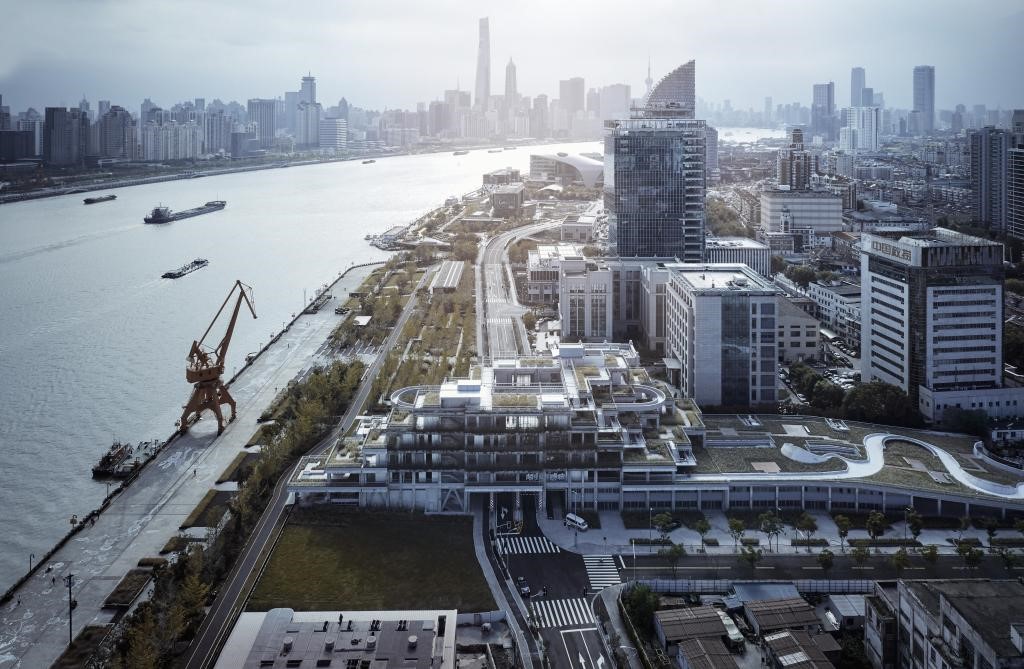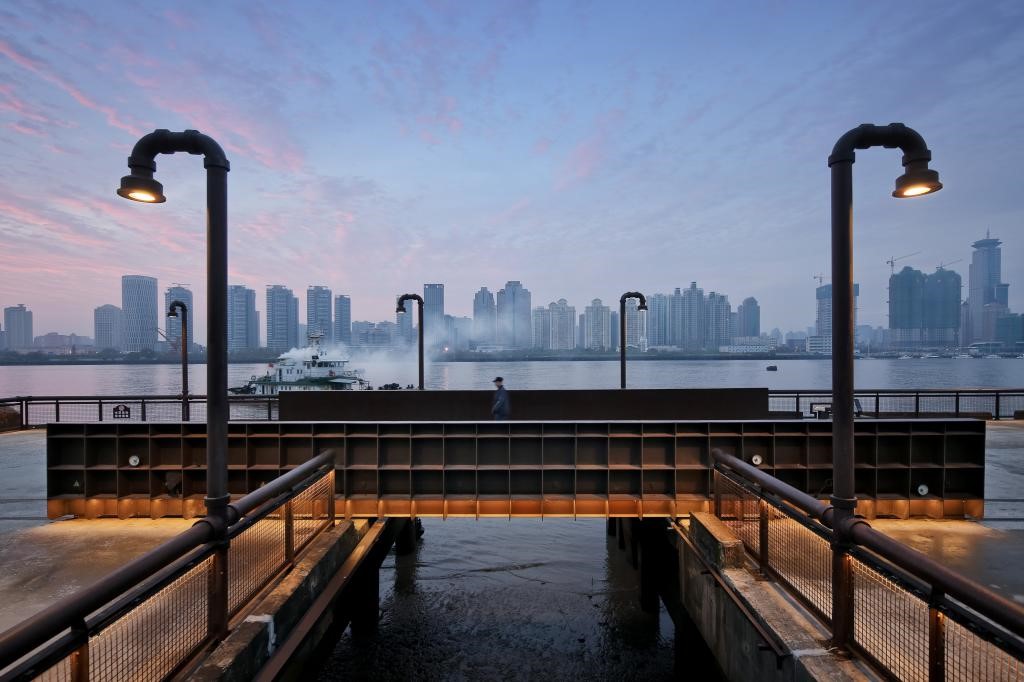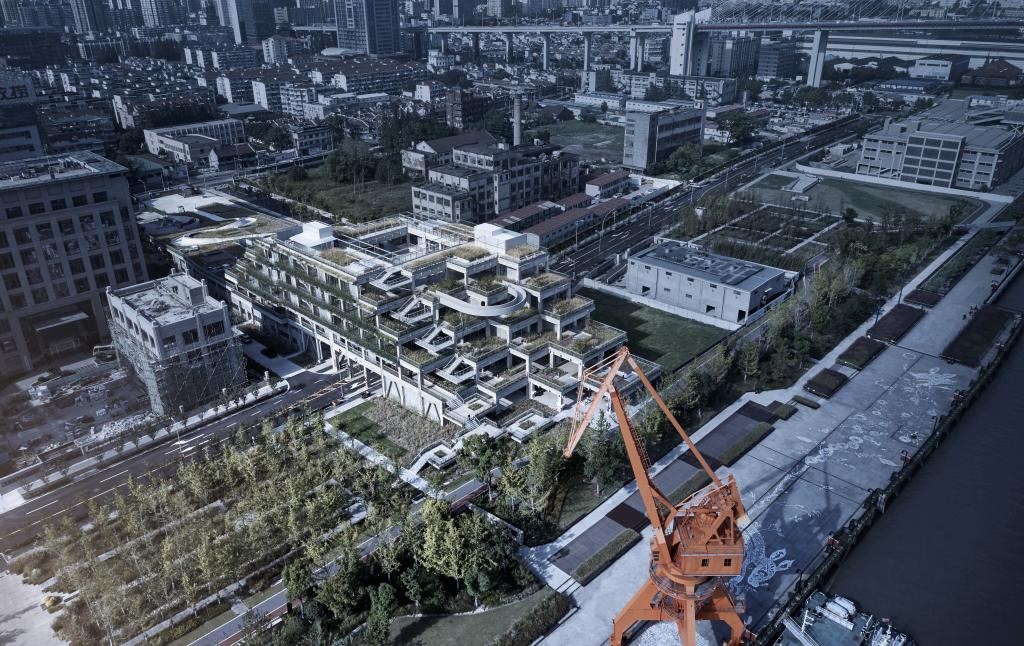President XI Jinping asked about the planning and construction of Yangpu Riverfront Public Space and chatted merrily with tourists and local residents on the first stop of his inspection tour during his visit to Shanghai from November 2, 2019.
President XI Jinping asked about the planning and construction of Yangpu Riverfront Public Space and chatted merrily with tourists and local residents on the first stop of his inspection tour during his visit to Shanghai from November 2, 2019.
The news thrilled Prof. ZHANG Ming, designer of the Yangpu Riverfront Public Space. ZHANG is the vice head of the Department of Architecture, School of Architecture and Urban Planning of Tongji University, and head architect of the Original Design Studio of Tongji Design Group. "We are so excited and encouraged by President XI's visit to our Yangpu Riverfront project!" He told the reporter.
Prof. ZHANG explained that the Trestle Bridge, the Demonstration Section, the Rainwater Garden, the Renren Wood Structure and the Green Hill around the Yangtszepoo Water Works in the south section of Yangpu Riverfront were elaboratively designed by his team over a period of four years. Aiming at "revival of history", the team had been dedicated to providing local residents with renewed access to the riverfront. Their painstaking efforts in meticulous surveying and mapping, and on-site inspections enabled a riverfront public space imbued in history to emerge amid the warm ambience of vibrant locality. The riverfront that was once occupied by productive facilities denying access with walls has now been transformed into a shared open green space of culture and style.

An urban parlor the shared open public space of Yangpu Riverfront

The steel trestle bridge and water-pipe lamps between high-piled wharfs

A bird’s eye view of the Green Hill
“We were so delighted to learn that the first stop of our President’s inspection tour in Shanghai was to the site designed by my team. What a recognition to our work over the past few years! We will certainly work even harder in renovating run-down areas in Shanghai and providing quality shared open public spaces.” Prof. ZHANG added.
In October 2017, the 2.8-kilometer riverfront line designed by ZHANG's team to the west of Yangpu Bridge was officially open to the public, constituting a seamless riverfront along Huangpu River in Shanghai. After accomplishing this task, the Yangpu District decided to extend the project 2.7 kilometers into the east of Yangpu Bridge for an integration of "three zones", namely, the Industrial Heritage Expo Zone, the Natural Landscape Experience Zone, and the Three Interwoven Vitality Zones (for cycling, jogging and strolling, respectively), with the vision of building a world-class waterfront space and striving towards a "world parlor". Since then, ZHANG’s team had embarked on a new mission of renovating heritage buildings. Under his leadership, the team designed a number of architectural works, including the Green Hill as shown above. According to ZHANG, his team had been committed to reviving an obsolete tobacco warehouse with a refined vintage and futuristic style. After weighing the pros and cons of demolition or retention while seeking the compound use of land and coordinating the connection between riverfront open spaces and the hinterland, the team came up with an inclusive and compound urban complex that integrated municipal transportation, parks, green spaces and public services. During the first month of its opening to the public, the renovation project turned out to be a magnet for local residents and tourists alike. Since then, it has become a must-visit attraction in Shanghai that has gone viral on the Internet.

Roads under the Green Hill
2019 Shanghai Urban Space Art Season (SUSAS 2019), with ZHANG as the chief architect, debuted in Yangpu Riverfront at the end of September under the theme of “Visiting Industrial Heritage and Embracing Space Art”. The main venue of SUSAS 2019 was a 5.5-kilometer riverfront public space in the south section of Yangpu Riverfront -- a place with centennial heritage of industrial civilization that once thrived with shipbuilding, textile and public services, for which Yangpu deservedly earned the name “cradle of modern industry.”
Adapted from the Chinese news written by CHENG Guozheng
https://news.tongji.edu.cn/info/1003/71463.htm